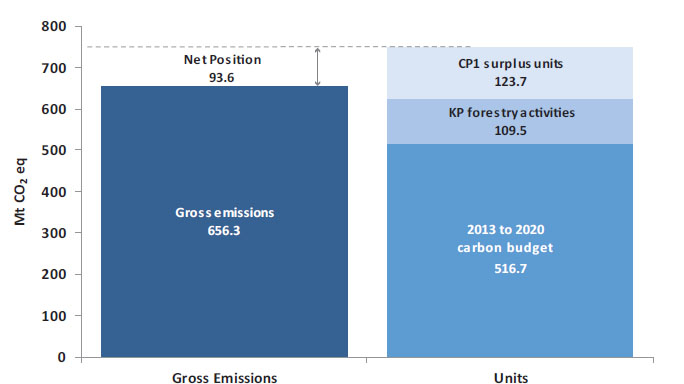The government released a pile of climate change reports today on its Kyoto Protocol CP1 and CP2 (to which we are not a party) obligations. And they expose the naked fraud which lies at the heart of our climate change policy.
First up, Kyoto. Under the Kyoto Protocol, New Zealand had accepted a target of limiting its net average emissions over the to 2008 - 2012 period to gross 1990 levels. Which in practice meant a target of 309.5 million tons over five years. So how did we do? Our emissions kept increasing, and in fact increased by around 20%, but thanks to the net-gross scam, we were able to use forest reductions to cover that. So, we met our CP1 target, fairly, within the (broadly accepted) Kyoto rules. And according to those rules, the surplus can be "banked" against targets for later commitment periods.
But then the real scam begins. Because according to our CP1 "true-up" report, we paid for a huge chunk of our emissions with international units. Most of this is ERU's under Kyoto's Joint Implementation mechanism, and a staggering 86.3 million tons of that came from Ukraine - where huge amounts of credits were issued fraudulently and as part of an international criminal scam. But we're also using 16 million tons of Kyoto Certified Emissions Reductions issued under the Clean Development Mechanism. These are also hugely problematic - around 50% of CERs were issued for destruction of refrigerant gases - gases which had been produced solely so they could be destroyed for credit. Which is why such "credits" are no longer accepted, and cannot be used in Kyoto's second commitment period.
But Kyoto CP1 Assigned Amount Units can. And by paying for our CP1 obligation with these dubious and possibly fraudulent credits, New Zealand has assured that it has a huge surplus of AAU. 123.75 million tons worth, or about two years worth of emissions. And predictably, we're using this banked credit to "pay" to "meet" our self-imposed CP2 target:

New Zealand’s projected gross emissions and units acquired over 2013 to 2020 period* (as of 14 December 2015)
Or, to put it simply: we bought fraudulent credit in CP1, we laundered it into AAU, and we're effectively using it to pay to meet our CP2 reductions. And then we'll no doubt try and carry over that surplus (plus any other fraud we can launder) to pretend to meet the (self-imposed, not legally binding) 11% by 2030 target we offered at Paris. And meanwhile, our emissions will just keep on rising.
And this is why other countries no longer support international carbon trading: because its an outright scam. And the fact that New Zealand's climate change policy is based on it speaks volumes about both our honesty and our commitment to real change.
Thursday, December 17, 2015
Climate change: A policy based on fraud
Posted by
Idiot/Savant
at
12/17/2015 12:54:00 PM
Labels:
Climate Change,
Climate Change Policy,
Emissions Trading



